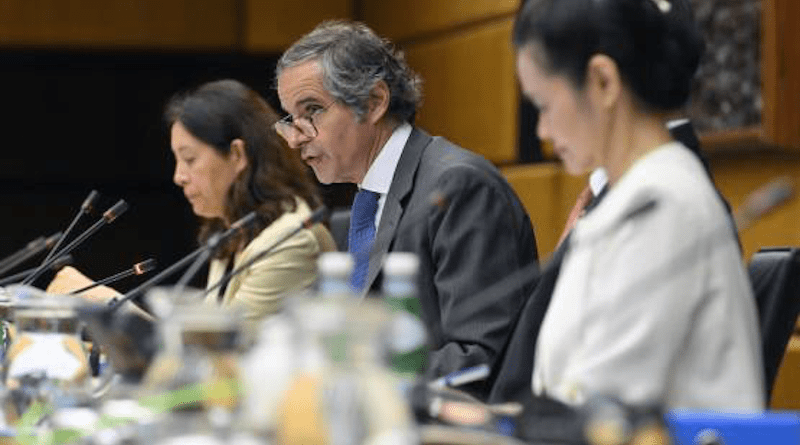Grossi Insists Need For IAEA-Led Visit To Ukraine’s Zaporizhzya Nuclear Power Plant
IAEA Director General Rafael Mariano Thursday morning reiterated the need for an expert mission to Ukraine’s Zaporizhzhya Nuclear Power Plant, the site of which is under the control of Russian forces.
“The current situation is untenable. Every day it continues; every day that vital maintenance work is delayed; every day that supply chain interruptions cause a break in the delivery of vital equipment; every day the decision-making ability of Ukrainian staff is compromised; every day the independent work and assessments of Ukraine’s regulator are undermined; the risk of an accident or a security breach increases,” Mr Grossi said.
He said he is actively working to agree and organize an IAEA-led international mission to the Zaporizhzhya plant to carry out essential nuclear safety, security and safeguards work at the site. He expressed his grave concern at the extremely stressful and challenging working conditions under which Ukrainian management and staff are operating the plant.
The number of indispensable nuclear safety and security pillars that have been compromised at the plant is at least five out of the seven: “This is why IAEA safety and security experts must go” to the site, he said.
He said IAEA safeguards inspectors must be able to continue to fulfil their regular, indispensable verification activities at the plant in line with Ukraine’s Comprehensive Safeguards Agreement and Additional Protocol, and that the transmission of safeguards information to the IAEA had now been interrupted for more than a week.
Mr Grossi said the Ukrainian government at the highest levels has requested that the IAEA send a mission to Zaporizhzhya: “This mission is not a matter of wanting or wishing, it is an obligation on the side of Ukraine and on the side of the IAEA. The IAEA will go to Zaporizhzhya NPP under the legally binding safeguards agreement that Ukraine has with the IAEA.”
Similar missions have led to tangible results. At Chornobyl, the IAEA experts re-established the flow of safeguards information to the IAEA, took crucial measurements of radiation in the environment, assessed Ukraine’s needs and delivered a preliminary batch of equipment.
Dozens of radiation detectors are once again transmitting data from the area around the Chernobyl site after Ukraine – with technical support from the IAEA – succeeded in reviving a vital information link that was cut at the start of the conflict.
Working with Ukraine
The IAEA is working closely with Ukraine to address what needs to be done to uphold the highest possible level of safety and security at the country’s nuclear facilities and continue to implement nuclear safeguards, Mr Grossi said.
“The best action to ensure the safety and security of Ukraine’s nuclear facilities and its people would be for this armed conflict to end now,” Mr Grossi said.
Mr Grossi detailed how on 24 February the IAEA’s International Incident and Emergency Centre (IEC) initiated its technical response framework, and that on the night and early morning of 3 and 4 March, the physical integrity of the site of the Zaporizhzhya plant was violated. For the first time since 2011, the IEC went to the highest alert level and has remained on alert since with teams on-call 24/7.
Mr Grossi said that military action has compromised the safety of radiation sources; destroyed infrastructure at Ukraine’s Neutron Source and other nuclear facilities; damaged waste repositories; threatened collateral damage at nuclear power plants and has negatively impacted the plants in Chernobyl and Zaporizhzhya, and their staff, in multiple ways.
“Even amid this unprecedented and volatile situation, we have managed, together with Ukraine and with the generous support of many Member States, to develop and begin to deliver the comprehensive programme of assistance that will help to uphold the seven inalienable pillars of nuclear safety and security amid the first military conflict to be fought around the facilities of a major nuclear energy programme,” Mr Grossi said.
A combined approach of remote and the on-the-ground technical assistance allowed the IAEA to develop an Assistance Action Plan and make detailed assessments of Ukraine’s security and safety needs. Eleven IAEA Member States registered in the IAEA’s Response and Assistance Network (RANET) have so far offered to provide specialised equipment to Ukraine.

